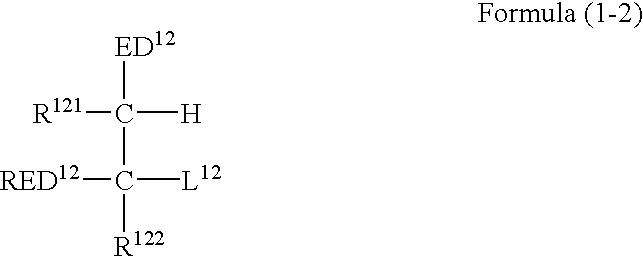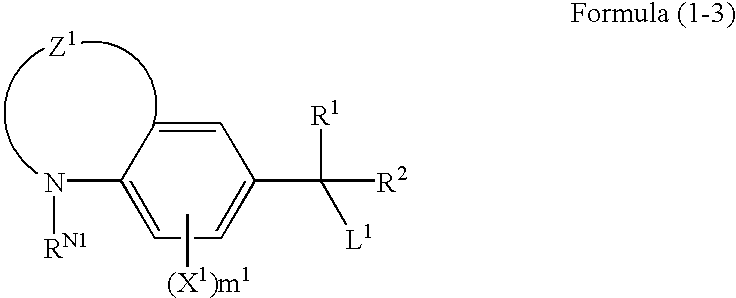Photothermographic material
a technology of photothermographic materials and materials, applied in the field of photothermographic materials, can solve the problems of reducing the lumo of photothermographic materials, reducing the sensitivity of photothermographic materials for wet processing, and reducing the lumo
- Summary
- Abstract
- Description
- Claims
- Application Information
AI Technical Summary
Problems solved by technology
Method used
Image
Examples
example 2
[0390] >
[0391] PET having IV (intrinsic viscosity) of 0.66 (measured in phenol / tetrachloroethane=6 / 4 (weight ratio) at 25.degree. C.) was obtained in a conventional manner by using terephthalic acid and ethylene glycol. The product was pelletized, dried at 130.degree. C. for 4 hours, then melted at 300.degree. C., extruded from a T-die and rapidly cooled to form an unstretched film having such a thickness that the thickness should become 120 .mu.m after thermal fixation.
[0392] The film was stretched along the longitudinal direction by 3.3 times using rollers of different peripheral speeds, and then stretched along the transverse direction by 4.5 times using a tenter. The temperatures used for these operations were 110.degree. C. and 130.degree. C., respectively. Then, the film was subjected to thermal fixation at 240.degree. C. for 20 seconds, and relaxed by 4% along the transverse direction at the same temperature. Then, the chuck of the tenter was released, the both edges of the f...
example 4
[0482] Photothermographic materials were prepared in the same manner as in Examples 2 and 3 except that the support described below was used instead of the support used in Examples 2 and 3.
[0483] >
[0484] PET having IV (intrinsic viscosity) of 0.66 (measured in phenol / tetrachloroethane=6 / 4 (weight ratio) at 25.degree. C.) was obtained in a conventional manner by using terephthalic acid and ethylene glycol. The product was pelletized, dried at 130.degree. C. for 4 hours, melted at 300.degree. C., then extruded from a T-die and rapidly cooled to form an unstretched film having such a thickness that the thickness should become 120 .mu.m after thermal fixation.
[0485] The film was stretched along the longitudinal direction by 3.3 times using rollers of different peripheral speeds, and then stretched along the transverse direction by 4.5 times using a tenter. These operations were performed at temperatures of 110.degree. C. and 130.degree. C., respectively. Then, the film was subjected to ...
example 5
[0494] Photothermographic materials were prepared in the same manner as in Example 2 by using compounds of Types (i) to (iv) except that coating solutions for image-forming layer and protective layer were changed as described below.
[0495] >
[0496] (Preparation of Coating Solution for Image-forming Layer)
[0497] Silver behenate dispersion A prepared in Example 2 was added with the following binder, materials and each of Silver halide emulsions a to i in the indicated amounts per mole of silver in Silver behenate dispersion A, and added with water to prepare a coating solution for image-forming layer. After completion, the solution was degassed under reduced pressure of 0.54 atm for 45 minutes. The coating solution showed pH of 7.3-7.7 and viscosity of 52-59 mPa.multidot.s at 25.degree. C.
19 Binder: SBR latex 395.6 g as solid (St / Bu / AA = 68 / 29 / 3 (weight %), glass transition temperature: 17.degree. C. (calculated value), Na.sub.2S.sub.2O.sub.8 was used as polymerization initiator, pH was...
PUM
| Property | Measurement | Unit |
|---|---|---|
| pKa | aaaaa | aaaaa |
| pKa | aaaaa | aaaaa |
| total carbon number | aaaaa | aaaaa |
Abstract
Description
Claims
Application Information
 Login to View More
Login to View More - R&D
- Intellectual Property
- Life Sciences
- Materials
- Tech Scout
- Unparalleled Data Quality
- Higher Quality Content
- 60% Fewer Hallucinations
Browse by: Latest US Patents, China's latest patents, Technical Efficacy Thesaurus, Application Domain, Technology Topic, Popular Technical Reports.
© 2025 PatSnap. All rights reserved.Legal|Privacy policy|Modern Slavery Act Transparency Statement|Sitemap|About US| Contact US: help@patsnap.com



